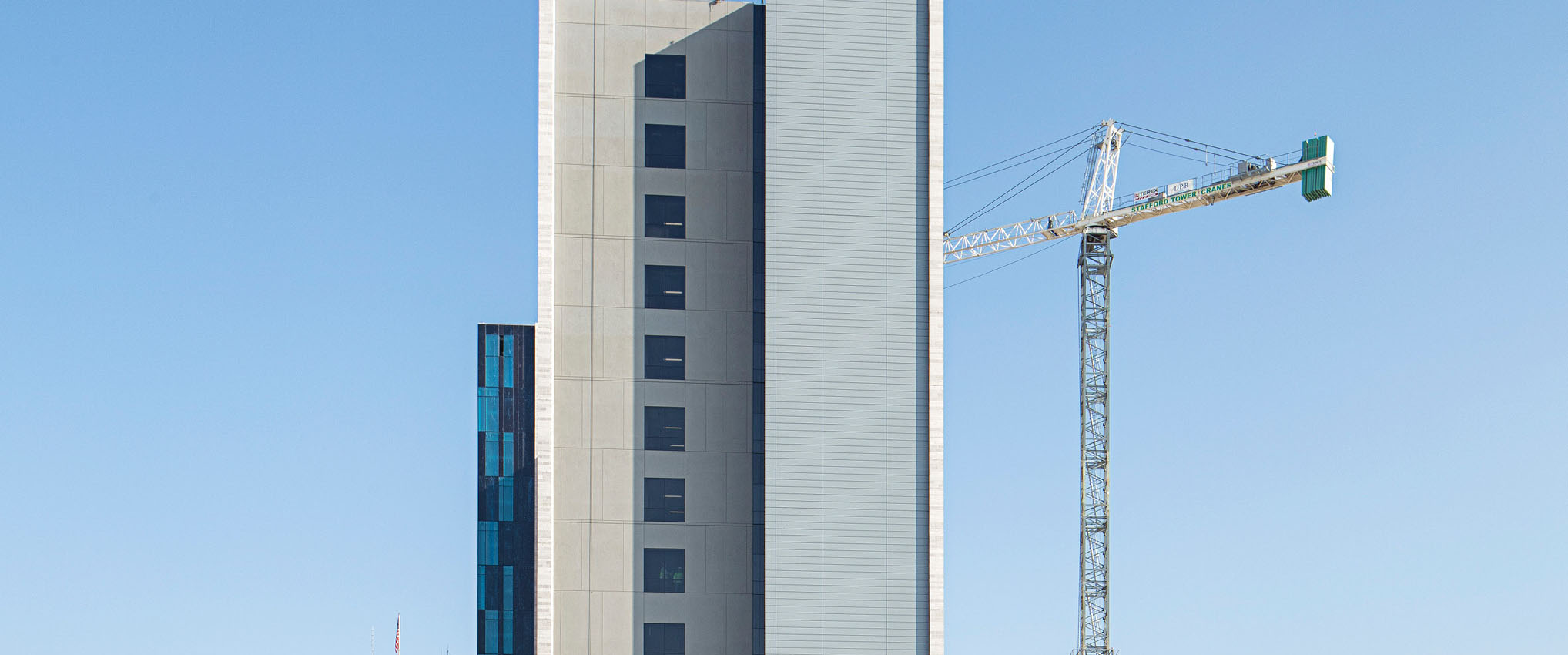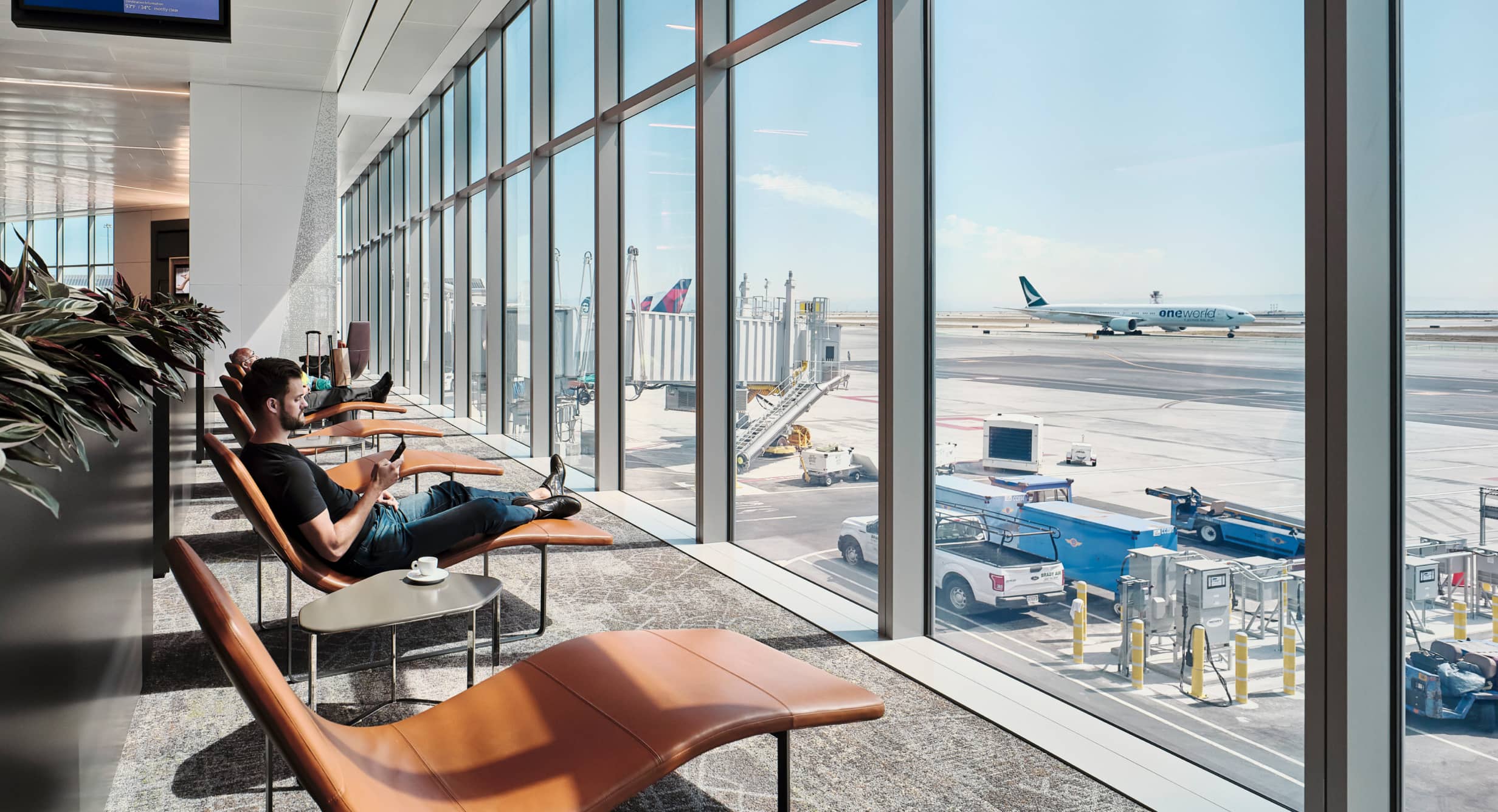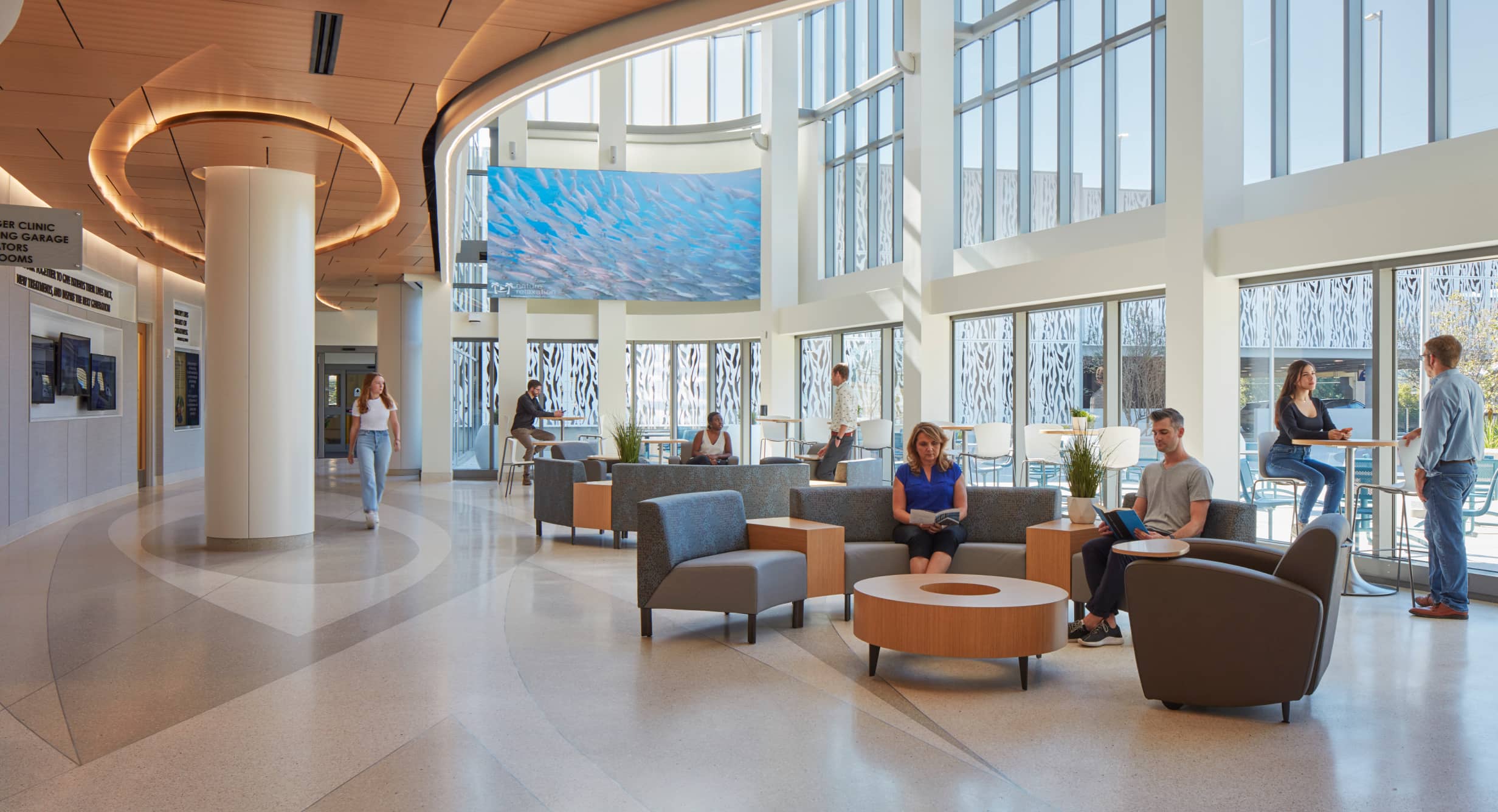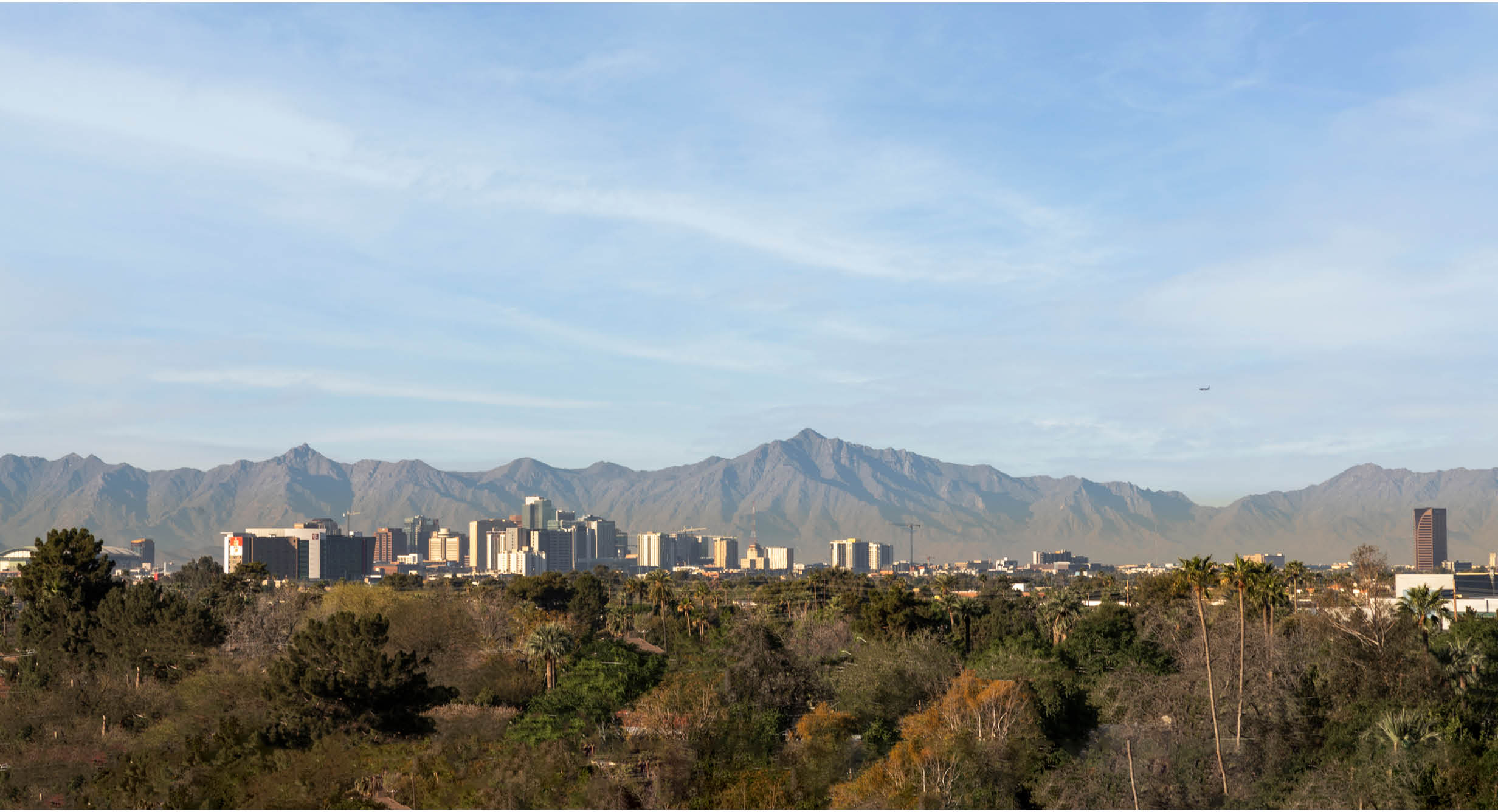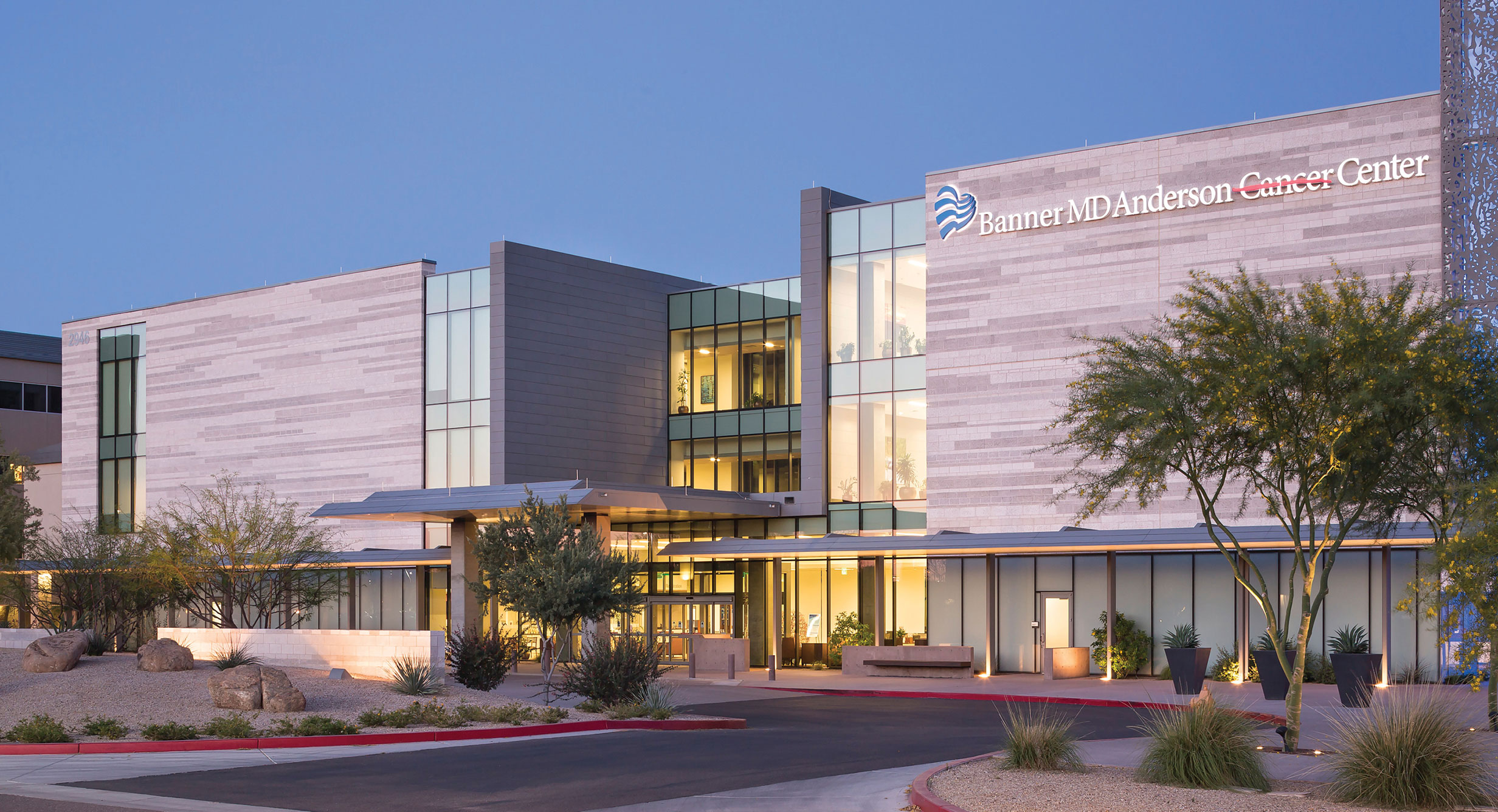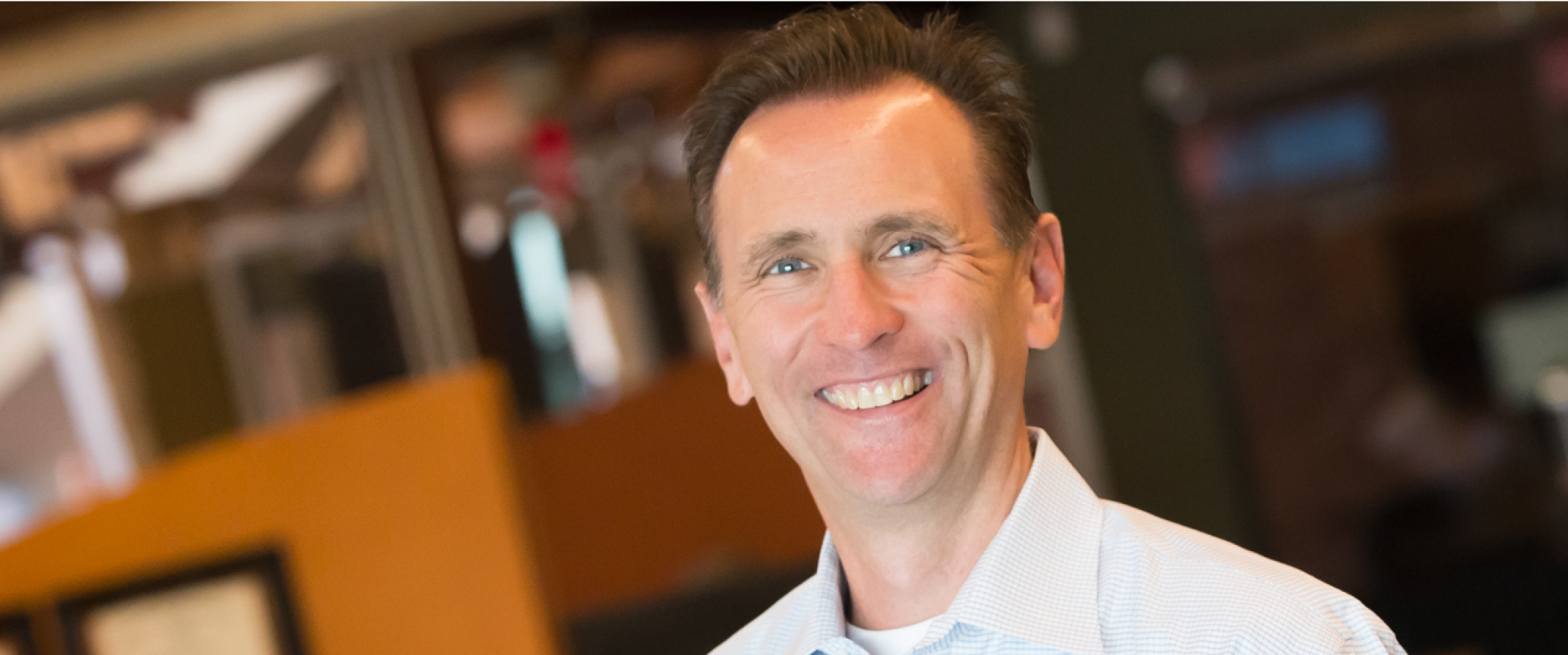
Banner – University Medical Center Phoenix Expansion The Tallest Hospital in Arizona
Phoenix, Arizona, USA
The Challenge
To expand the capacity and capabilities of the Banner – University Medical Center Phoenix campus with a replacement patient tower and new emergency department.
The Design Solution
The 293,120-square-foot (27,231 sm), three-story emergency department is designed as a podium to a 372,476-square-foot (34,604 sm), 13-story replacement patient tower. The emergency department includes 60 exam rooms, 40 observation rooms, five trauma bays, four operating rooms, a global response center, two helipads and an emergency generator plant. The tower has 312 private rooms, four ICU floors, seven medical-surgical floors and two shell floors. Also included is an 1,100-car parking garage.
The project team developed a phased approach to effectively design and build the new emergency department without impacting existing operations. Planned with growth and flexibility in mind, the expansion includes infrastructure for two additional towers.
The Design Impact
The Banner – University Medical Center Phoenix serves one of the fastest growing cities in the United States and it is the tallest hospital in Arizona. HKS is responsible for many of Banner Health’s design standards and room templates, which were used to create efficient and flexible healing environments that also support the hospital’s teaching functions. Thanks to the integrated project delivery, the project opened ahead of schedule and under budget.
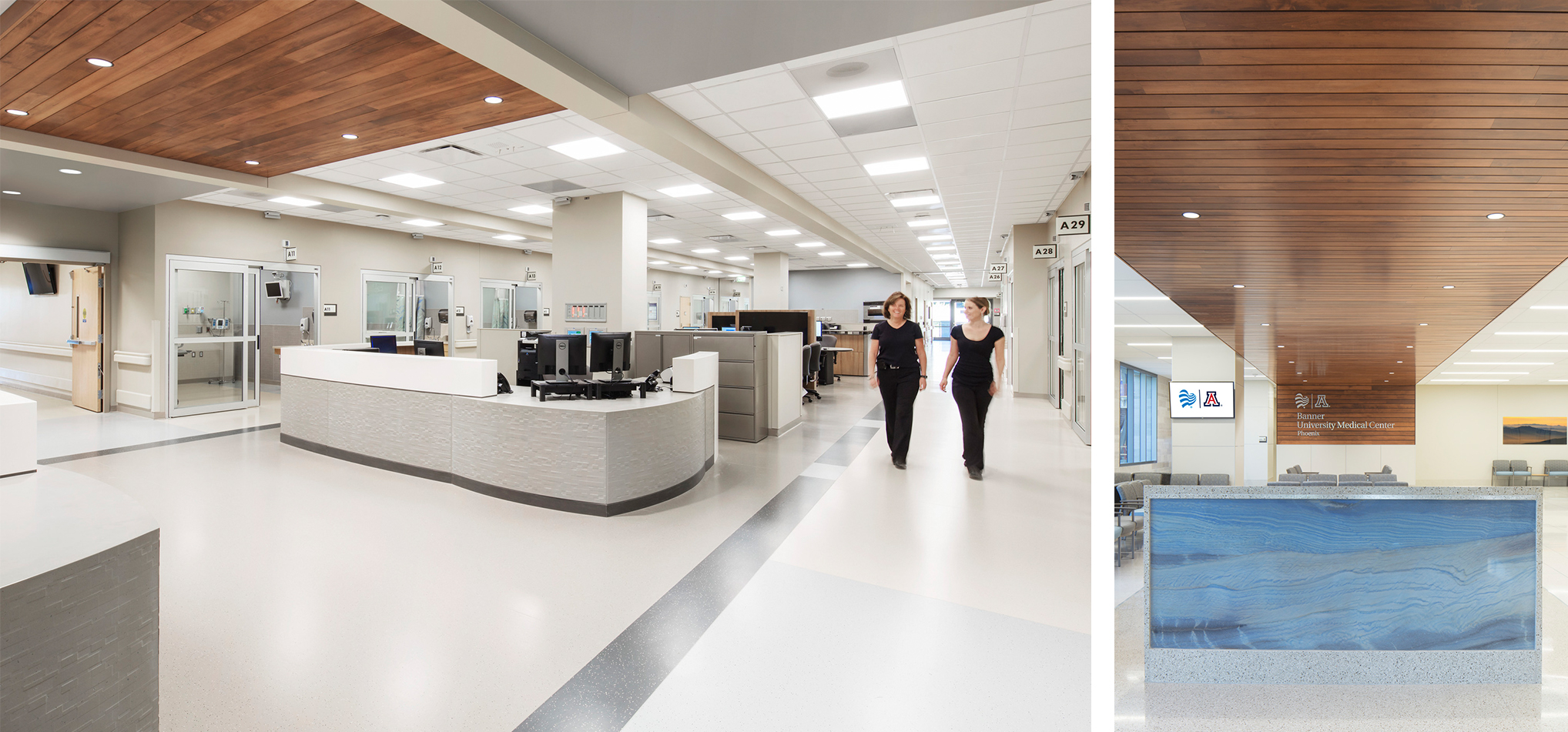
Project Features
- 16 stories
- 372,476-square-foot (34,604 sm) patient tower
- 293,120-square-foot (27,231 sm) emergency department
- 312 private rooms
- 60 exam rooms
- 40 observation rooms
- Five trauma bays
- Four operating rooms
- Two helipads
- Global response center
- Emergency generator plant
- 1,100-car parking garage
Tailoring a building to your needs rather than tailoring your needs to a building is the big difference. We’re usually trying to figure out how to operationalize inefficiency in design and construction, and now we’re trying to build-in efficiency in design and construction.
Client
